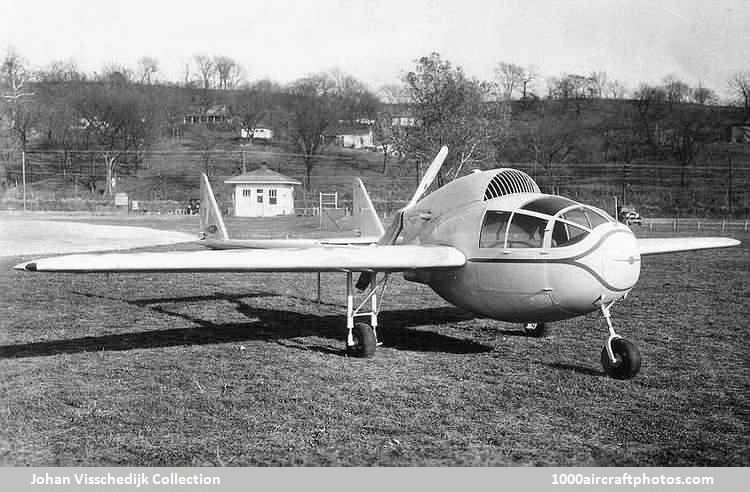Type: Two-seat light cabin monoplane.
Wings: Mid-wing cantilever monoplane in one piece. Structure is of metal multi-cellular construction, the smooth metal skin being further reinforced with longitudinal stringers. Center portion of wing supports engine, cabin, tail booms and landing gear.
Nacelle: Egg-shaped structure of light alloy construction with cabin in the nose and the engine enclosed in the after end.
Tail unit: Monoplane type with twin fins and rudders carried on two monocoque metal tail booms. The booms are readily detachable from the main spar of the wing. Tail surfaces are metal framed.
Landing gear: Three-wheeled type. Two main wheels are each sprung by two Bendix shock-absorber struts which are rigidly braced to the wing structure. Steerable front wheel below the nose of the nacelle, also with Bendix shock-absorber strut. 15 in (38 cm) travel on main struts, 10 in (25 cm) on nose strut. Wheel brakes on main wheels.
Power plant: A converted Ford V-8 eight-cylinder liquid-cooled V-engine developing 100 hp at 3,800 rpm. Engine mounted direct onto wing on four rubber bushings and drives pusher airscrew through 2 : 1 reduction gear and 30 in (76 cm) extension shaft integral with the engine. Water radiator mounted on brackets attached to the engine. Entire engine unit can be removed by undoing four holding-down bolts and fuel lines.
Accommodation: Enclosed accommodation for two side-by-side in nose of nacelle with direct access from ground through door on starboard side.
Max speed: 120 mph (192 kmh)
Cruise speed: 100 mph (160 kmh)
Landing speed: 45 mph (72 kmh)
Climb: 580 ft (177 m)/min
